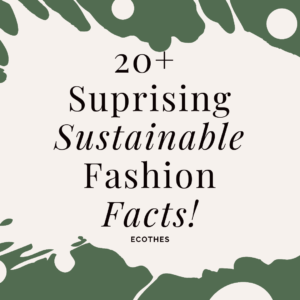In this material guide, we’ll discuss what Nylon fabric is, and ask is Nylon bad for the environment?
Let’s jump in.
What is Nylon?
Nylon is a silk-like thermoplastic synthetic fiber constructed of polyamide linked chains derived from petroleum; it is also known as polyamide.
Dupont first synthesized nylon in 1935, where brands used it in toothbrush bristles (1938) and famously as women’s stockings in the 1940s.
Today Nylon is used globally in massive quantities, especially in the fashion and textiles industry, with Nylon 6 and Nylon 6/6 being the most common forms of Polyamides used.
The difference between Nylon 6 and Nylon 6/6?
In summary, Nylon 6 comprises one monomer (which can be bonded to form a chain of polymers) consisting of 6 carbon atoms, while Nylon 6/6 is made from two monomers, each with six carbon atoms.
Nylon 6 and 6/6 share similar properties with Nylon 6/6 is considered less flexible and more durable thanks to the double-bonded monomers.
Now, that’s the ‘sciencey’ bit; let’s get onto how Nylon is used in the fashion industry.
What is Nylon used for?
Nylon is the second most used synthetic fiber behind polyester in the fashion industry. The Textile exchange estimated that 5.4 million tonnes of Nylon was produced in 2020, occupying a 5% market share of the entire global fiber market.
Nylon’s properties include:
- Extremely durable and robust, Nylon is a stronger polymer than polyester with a high tensile strength
- Lightweight
- Elastic properties
- Water-resistant
- Quick to dry
- UV resistant (Making Nylon a preferable material choice for swimwear)
Nylon or polyamide is commonly used for clothing and accessories, including waterproof jackets, swimsuits and bikinis, tights, hats, bags, luggage, and footwear.
Outside the fashion industry, polyamide is also used for applications, including fishing nets, food packaging, ropes, and military equipment.
Is Nylon Biodegradable?
No, Nylon is not biodegradable. Instead, nylon is a biodegradable-resistant polymer, which remains intact in landfills and oceans for hundreds of years.
Advancements have been made in creating biodegradable bio-based polymers, including bio-polyamide, which we’ll discuss further in the article.
Is Nylon bad for the environment?
Overall, like polyester, Nylon isn’t great for the environment. It takes large amounts of energy to create and increases our reliance on non-renewable crude oil.
In addition, Nylon doesn’t readily biodegrade, meaning it pollutes the land and oceans for many years.
What is Recycled Nylon?
As we move toward the need for more sustainable materials, we need to look for alternatives to virgin nylon (virgin polyamide).
Recently, there has been an increase in recycled polyamide and bio-based polyamide as an alternative to virgin Nylon.
Recycled Nylon, similar to recycled polyester, is the transformation of existing nylon materials into new fibers.

Recycling old discarded products and turning them into new fibers decreases our reliance on fossil fuels and diverts plastic pollution from landfills and oceans.
The primary sources of recycled nylon come from discarded fishing nets, chemical recycling, and post-consumer textiles.
Recycled nylon can be recycled again and again into new products and fibers.
However, even with the need to reduce our reliance on non-renewable crude oil, the percentage of recycled-Nylon compared to virgin nylon is still very low, at only 1.9% of all nylon production in 2020.
Common types of Recycled-Nylon
The most common types of recycled nylon include:
Italian-based company creating recycled from fishing nets, textile recycling, and chemical recycling. Econyl is commonly used in the fashion industry by sustainable swimwear brands creating swimsuits and bikinis.
USA-based brand REPREVE® uses recycled plastic to turn into regenerated fibers for clothing and textile production. REPREVE® fabric is commonly used for recycled activewear and swimwear.
What is Bio-Based Polyamide?
Bio-based polyamide is an eco-friendly version of polyamide created from bio-based renewable products, including natural fats and oils rather than petroleum.
Bio-based polyamides are biodegradable and therefore preferential for use over virgin polyamide.
Research is still ongoing into the production and widespread use of bio-polyamides. Currently, the production of bio polyamide is still deficient, even lower than recycled polyamide, with only 0.4% of the polyamide fiber market being bio-based.
Wrapping Up: Is Nylon Bad for the Environment
In summary, virgin Nylon has a negative environmental impact. The synthetic fiber Nylon isn’t biodegradable and relies on non-renewable fossil fuels to produce.
There are advances in eco-friendly alternatives to Nylon, with recycled polyamide and bio-based polyamide gaining in popularity; however, these forms of Nylon still only occupy a total of 2.3% of the entire global Nylon production.
When shopping for clothing, look out for recycled nylon used over virgin nylon for an eco-friendly swap. In addition, rather than throw away old clothes containing nylon, please send them to a recycling scheme instead.
If you’re looking for other eco-friendly alternatives to Nylon, we recommend choosing natural fibers over synthetic fibers such as polyester or nylon.
Organic cotton, hemp, and bamboo are all great natural fibers used by the sustainable clothing industry with lower environmental impact.



